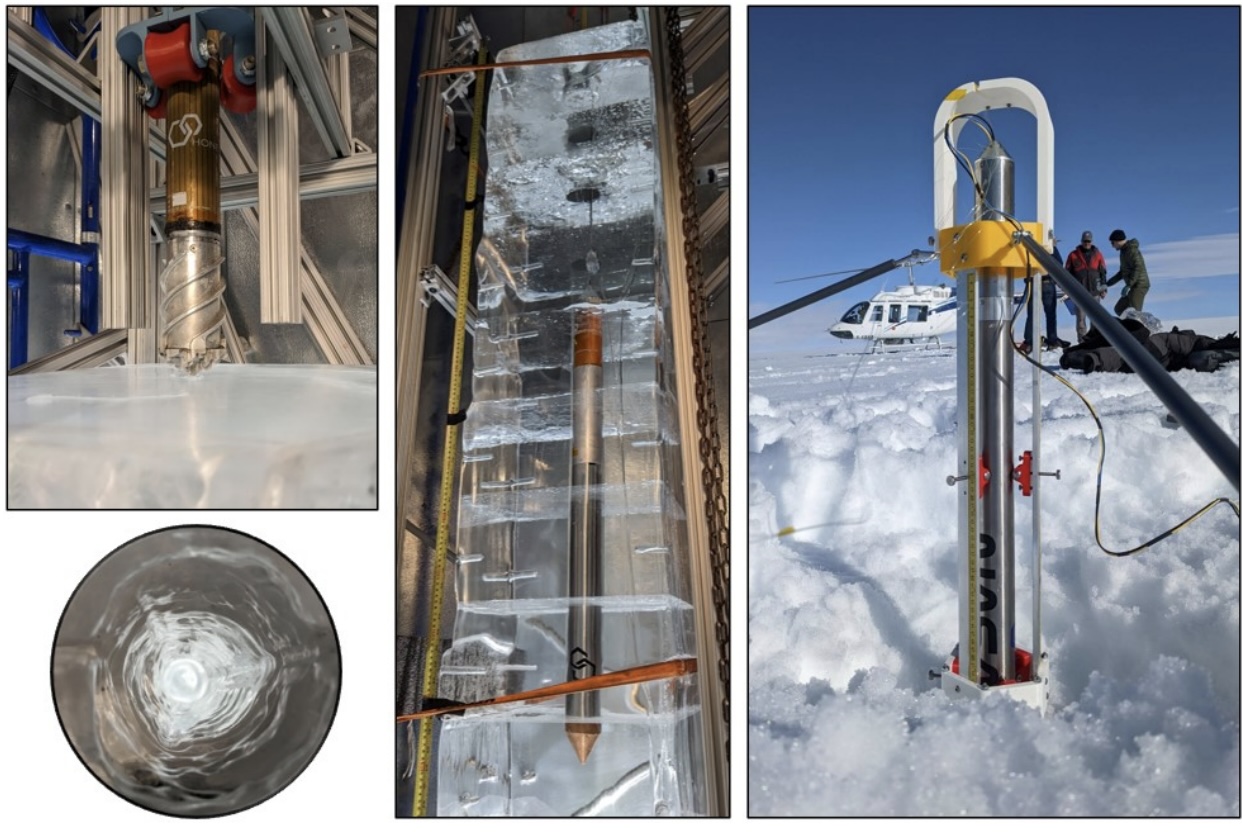I remember reading about an audacious mission to endeavour to drill through the surface ice of Europa, drop in a submersible and explore the depths below. Now that concept may be taking a step closer to reality with researchers working on technology to do just that. Worlds like Europa are high on the list for exploration due to their potential to harbour life. If technology like the SLUSH probe (Search for Life Using Submersible Head) work then we are well on the way to realising that dream.
The search for life has always been something to captivate the mind. Think about the diversity of life on Earth and it is easy to see why we typically envisage creatures that rely upon sunlight, food and drink. But on Earth, life has found a way in the most inhospitable of environments, even at the very bottom of the ocean. The Mariana’s Trench is deeper than Mount Everest is tall and anything that lives there has to cope with cold water, crushingly high pressure and no sunlight. Seems quite alien but even here, life thrives such as the deep-sea crustacean Hirondellea Gigas – catchy name.

Europa, one of the moon’s of Jupiter has an ice crust but this covers over a global ocean of liquid water. The conditions deep down in the ocean of Europa might not be so very different from those at the bottom of the Mariana’s Trench so it is here that a glimmer of hope exists to find other life in the Solar System. Should it exist, getting to it is the tricky bit. It’s not just on Europa but Enceladus and even Mars may have water underneath ice shelves. Layers of ice up to a kilometre thick might exist so technology like SLUSH has been developed to overcome.

The technology is not too new though since melt probes like SLUSH have been tested before. The idea is beautifully simple. The thermo-mechanical probe uses a drilling mechanism to break through the ice and then the heat probe to partially melt the ice chips, forming slush to enable their transportation to behind the probe as it descends.
The probe, which looks rather like a light sabre, is then able to transmit data from the subsurface water back to the lander. A tether system is used for the data transmission using conductive microfilaments and an optical fibre cable. Intriguingly and perhaps even cunningly, should the fibre cable break (which is a possibility due to tidal stresses from the ice) then the microfilaments will work as an antenna. They can then be tuned into by the lander to resume data transmission. The tether is coiled up and housed inside spools which are left behind in the ice as the spool is emptied. I must confess my immediate thought here was ‘litter’! I accept we have to leave probes in order to explore but surely we can do it without leaving litter behind! However there is a reason for this too. As the spools are deployed, they act as receivers and transmitters to allow the radio frequencies to travel through the ice.
The company working on the device is Honeybee Robotics have created prototypes. The first was stand alone, had no data transmission capability and demonstrated the drilling and slushing technology in an ice tower in Honeybee’s walk in freezer. While this was underway, the tether communication technology was being tested too with the first version called the Salmon Probe. This was taken to Devon Island in the Arctic where the unspooling method is being put through its paces. The first attempts back in 2022 saw the probe achieving depths of 1.8m!
A further probe was developed called the Dolphin probe and this was capable of getting to depths of about 100m but sea ice limitations meant it could only get to a depth of 2m! Thus far, all probes have performed well. Honeybee are now working on the Narwhal Probe which will have more measuring equipment on board, a deployable tether and spool and will be far more like the finished product. If all goes to plan it will profile the ice on Devon Island to a depth of 100m. This is still quite short of the kilometre thick ice expected but it is most definitely fantastic progress toward exploring the cold watery depths of alien worlds.
Source : SLUSH: AN ICE DRILLING PROBE TO ACCESS OCEAN WORLDS

